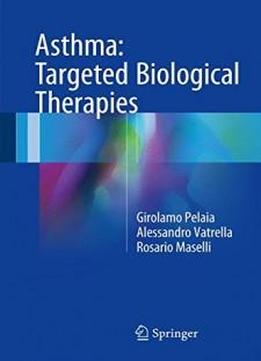
Asthma: Targeted Biological Therapies
by Girolamo Pelaia /
2016 / English / EPUB
1 MB Download
This book focuses on the fundamentals of the use of biologics in
asthma, describing the rationale, principles, mechanisms of
action, and indications. It offers an excellent balance between
basic science and the analysis of clinical trials, updating
readers with new developments that are changing the global
scenario for targeted biological anti-asthma therapies,
especially with regard to more severe disease. A range of
therapies are considered, from the humanized monoclonal anti-IgE
antibody omalizumab, widely approved as add-on treatment for
inadequately controlled disease, through to emerging biologics
for which evidence supportive of efficacy is accumulating,
including anti-IL-5, anti-IL-4, and anti-IL-13 therapies. One
aspect to emerge is the variability in individual response, which
suggests a need for characterization of different asthma subtypes
to permit the effective implementation of phenotype-targeted
treatments. This book will be of interest for pulmonologists,
clinical immunologists, and physicians seeking sound information
on these therapies, but also for scientists and pharmacologists
wishing to enhance their knowledge of the therapeutic
implications of the cellular and molecular mechanisms that
underlie severe, uncontrolled asthma.
This book focuses on the fundamentals of the use of biologics in
asthma, describing the rationale, principles, mechanisms of
action, and indications. It offers an excellent balance between
basic science and the analysis of clinical trials, updating
readers with new developments that are changing the global
scenario for targeted biological anti-asthma therapies,
especially with regard to more severe disease. A range of
therapies are considered, from the humanized monoclonal anti-IgE
antibody omalizumab, widely approved as add-on treatment for
inadequately controlled disease, through to emerging biologics
for which evidence supportive of efficacy is accumulating,
including anti-IL-5, anti-IL-4, and anti-IL-13 therapies. One
aspect to emerge is the variability in individual response, which
suggests a need for characterization of different asthma subtypes
to permit the effective implementation of phenotype-targeted
treatments. This book will be of interest for pulmonologists,
clinical immunologists, and physicians seeking sound information
on these therapies, but also for scientists and pharmacologists
wishing to enhance their knowledge of the therapeutic
implications of the cellular and molecular mechanisms that
underlie severe, uncontrolled asthma.











